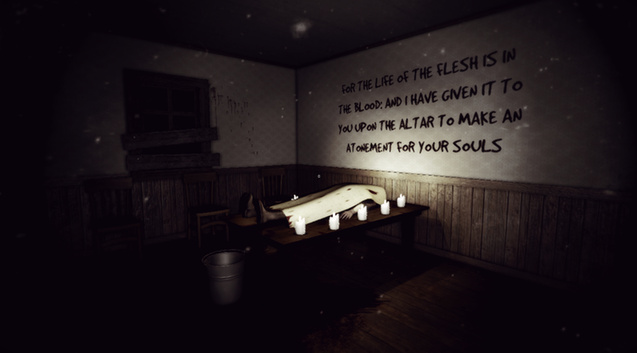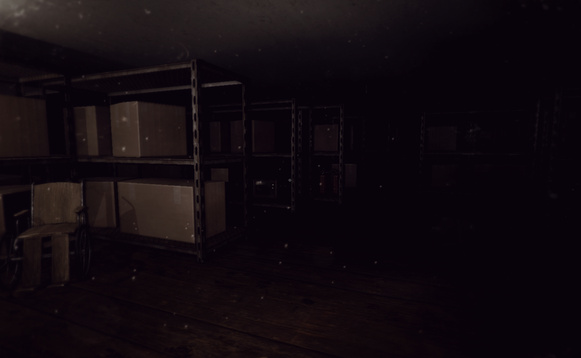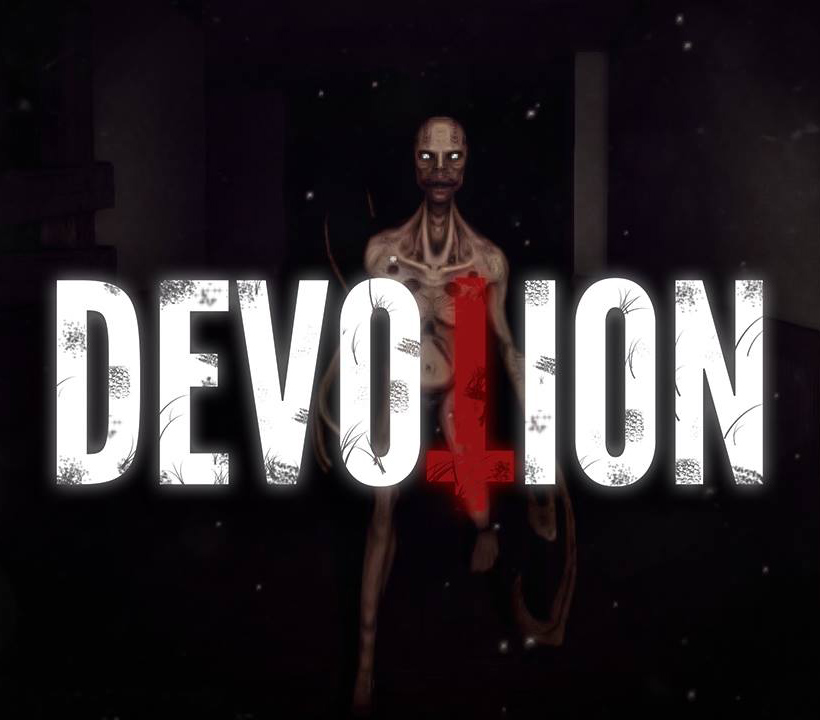Deadbyte Studios’ upcoming game, Devotion, is a survival horror game that’s currently on Steam Greenlight, and despite being in Alpha, it is already showing a lot of promise. It’s got an excellent atmosphere and early signs of an intriguing plot, which revolves around the lead protagonist, Amanda, investigating the mysterious disappearance of her father.
With its mid-seventies to early eighties decor, mysterious serpentine paganistic symbols, and long, creepy hotel hallways, I’m instantly reminded of some of the best classic horrors of that era, such as The Wicker Man, The Shining and The Changeling — arguably the three most terrifying films ever made.
Being a huge horror fan, I recognize that good writing is needed to set up the correct atmosphere. So I got to sit and down and speak to Devotions’ writer — and GameSkinny’s own — Caio Sampaio
GameSkinny (Michael Llewellyn): As a horror fan, I’m really liking what I’m seeing in Devotion. What are the media inspirations (film or other games) you’re looking to for Devotion in terms of atmosphere and its script?
Caio Sampaio: This is a very interesting question, because the game that introduced me to the notion of video games as a form of art was a horror one. F.E.A.R. was my first experience with a narratively driven form of interactive storytelling, and my mind was blown.
Needless to say, this game still gives me a lot of inspiration to this day. I always enjoyed how the game presented players with a compelling narrative by allowing the player to be contacted through the radio by his squadmates, but the lines of dialogue were often short, in order to not break the tension delivered by the ambiance. I tried to replicate this in Devotion, by allowing characters to speak through the phone to move the plot forward, but ensuring that these interactions did not drag for too long, in order to maintain the tension from the gameplay — The major inspirations for the gameplay mechanics were Outlast and Amnesia.
However, there was an unfortunate incident when it comes to the actual script of the game. Resident Evil 7 was released which contains a plot device that starts very similarly to Devotion (a character heads to an abandoned house after receiving a message from a supposedly dead loved one).
I must say this was an accident. I did not follow the development of Resident Evil 7, and I was unaware of its narrative until it came out and I watched the first five minutes on YouTube. My first thought was “Oh, this is a problem,” but it was too late to change the script for Devotion, as the lines of dialogue had already been recorded and implemented in the game.
This is my first project and my lack of experience was evident in this situation. I should have checked other horror games under development to ensure I was not working on a narrative that was similar to someone else’s. Well, lesson learned. The bright side, however, is that I have watched the entire gameplay of Resident Evil 7 and both stories turned out to be entirely different.
GameSkinny: In fairness, a lot of horror stories start with similar plot devices — it’s as you say, how the story moves forward in its own unique way that’s important. With Outlast being an inspiration, will Devotion be linear in its approach like that game? Or are there any plans for procedurally generated rooms like Layers of Fear?
Sampaio: While I am a big fan of procedural art, I am afraid that our team does not have the resources to implement this technology in our project, so we needed to follow a linear approach, as seen in Outlast.
GameSkinny: Linearity definitely worked for Outlast. Do you have a certain playtime in mind to complete the game?
Sampaio: Players will take approximately four hours to beat the game, but as they need to overcome some puzzles to get to the end, this figure may change from player to player, depending on how quickly they solve the puzzles.
GameSkinny: That’s a fair number, as some horror games have been known to overdo the length of play, and the scares become less effective as a result. Is the game being written with any plans to expand the story further, or are you just focusing on this game?
Sampaio: I am a daydreamer, so I have already brainstormed some ideas for a sequel. But these ideas haven’t been discussed with the lead developer yet, so there are no guarantees that we will ever make a second Devotion game. I suppose it all comes down to the feedback from the community. If the response from players is mostly positive, I see ourselves working on a sequel, but as of now our focus lies with this current game

GameSkinny: Virtual Reality is gaining a lot of momentum and seems to be tailor-made for horror games, and Devotion looks like it would work very well in VR. Are there any plans for this in the future?
Sampaio: This is indeed a possibility, but as [with] the previous answer, it will depend on the feedback from the community. We need to make sure players enjoy our game before investing in applying new technologies, such as VR.
GameSkinny: The game’s plot and script is really intriguing so far. Is there a lot of dialogue planned for the finished game?
Sampaio: Before the release of the demo, I already had a clear picture of what I wanted to do, in terms of the story. But after seeing the feedback from some people in the comments section of YouTube, I detected a problem. Some people had already guessed what the major plot twist of the story was, and this, of course, was a huge red flag to me.
Keeping the element of surprise is paramount in any form of storytelling and I had lost it, so I decided to change the direction of the story. As a result, it shifted drastically — and for the better. The first thirty minutes (what the player experiences in the demo) will remain the same, but what happens afterwards has changed. I saw wisdom in the comments and feedback and I realized I could learn from them to help improve my work.
With this said, while the story for the full game had to be almost entirely reworked, most of dialogue has already been planned to reflect these changes.
What I aim to do with this game is provide a more emotional tone that keeps an emphasis on the characters, their emotions, and how they interact with each other. I decided to take this direction, because I have played many horror games with stellar stories, but no emphasis on building a strong bond between player and the other characters.
This always left me with the feeling that this was a missed opportunity with unexplored potential in many horror games, hence the reason why I decided to head towards character development in the story of Devotion. There are two major challenges, however:
1. Create a compelling character in a short amount of time.
2. Move towards an emotional tone, without sacrificing the horror. Will it work? Perhaps it will. However, I must acknowledge the possibility of the narrative not working as intended, but it does not hurt to try.
GameSkinny: That’s a good approach to take for the game’s plot. It allows you to think more creatively as a writer and throw in a ‘red herring’ and a few twists that fans won’t see coming. Finally, with consoles being more open than ever to indie developers, do you guys have any plans to release your game on PSN or Xbox Live in the future?
Sampaio: Unfortunately, this is not in our plans. But no one knows what the future holds, so while we are not thinking about it, we do not discard the possibility.
GameSkinny: Thank you very much for your time and detailed answers, and we wish you the best of luck with Devotion.

Once again a huge thank you to Caio Sampaio for taking the time out of his busy schedule to answer these questions. Don’t forget to check out Deadbyte Studio’s Steam page and try the demo for yourselves.
Devotion is showing a lot of promise as a survival horror game, and I would like to wish the developers the very best of luck for the future.







Published: Feb 26, 2017 11:43 am